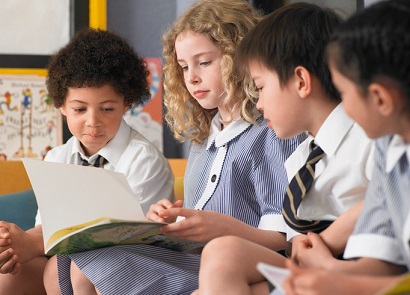
Last year, an OECD report found that Australia’s 15-year-olds have been experiencing a marked decline in reading skills.
Indeed, getting students to read more continues to be an uphill battle, with some experts warning that the increased use and integration of devices and technology in both households and classrooms has served as a distraction to learning.
However, as a recent study shows, students want a more tech-driven education – a finding that has the potential to complicate efforts by some states to restrict the use of digital devices in classrooms.
In an article published in The Conversation, University of Queensland senior lecturer Judith Seaboyer wrote that making use of digital devices for reading is not necessarily bad as screen-reading can also develop other skills.
“Screen-reading children, immersed from toddlerhood in the pleasures and instant gratification of skimming, clicking and linking, develop cognitive skills that make them adept power browsers, good at the useful abilityy to scan for information and analyse data,” Seaboyer wrote.
However, purely relying on, or favoring, devices as a platform for reading has its drawbacks.
Citing Maryanne Wolf, an American literacy expert and neuroscientist, Seaboyer cautioned that this can also impact the ability of deep reading and thinking as screen-reading does not demand much comprehension.
“Unless the cognitive skills required for deep reading are similarly developed and nurtured, new generations of readers – distracted by the ready availability of digital information – may not learn to venture beyond the shallows of the reading experience,” Seaboyer explained.
In a separate article published in The Conversation, San Diego State University professor Jean Twenge said teenagers, who read “short texts and Instagram captions, not longform articles that explore deep theme themes and require critical thinking and reflection”.
“It doesn’t bode well for their transition to college, either. Imagine going from reading two-sentence captions to trying to read even five pages of an 800-page college textbook at one sitting,” Twenge wrote.
“Reading and comprehending longer books and chapters takes practice, and teens aren’t getting that practice”.
Balance is key
Considering the importrance of devices and technology for students and teachers, Seaboyer said educators and parents should help students develop a “bi-literate reading brain” – something that can also be achievable for secondary and tertiary students.
Becoming bi-literate means the individual can read deeper and longer regardless of the medium they are using. Citing Wolf again, Seaboyer notes that children can still be exposed to devices for reading, but it should be kept to a minimum as printed books should be the primary focus.
Students aged five to 10 can be introduced to more digital skills alongside reading on paper, with the increased use screen-reading being more helpful especially for students with dyslexia.
To develop ‘reading resilience’ – or the ability to read longer texts – for older students, Seaboyer writes that the keye is to persuade them to prioritise the task in the first place and turn off their phones.
In a project conducted from 2011-2013, Seaboyer said they also included guides to go with complex texts to encourage students to engage in critical thinking. Providing guides also help students understand the importance of reading for learning – and choose to read because of it.
These guides also helped students to read for longer, as well as to resist checking their smartphones.


